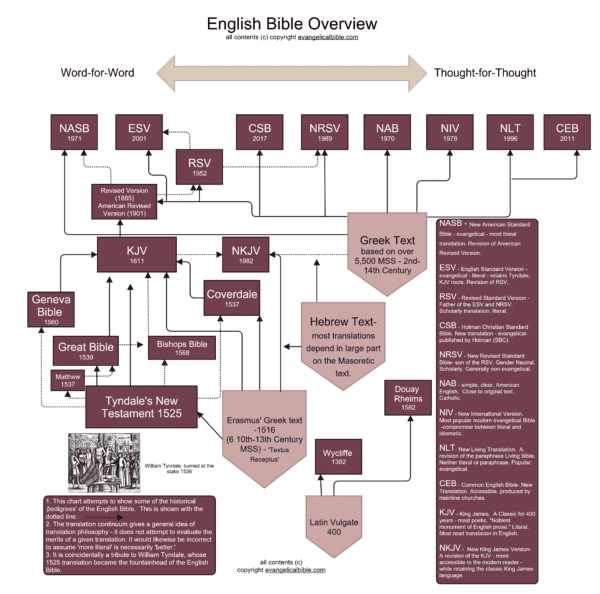Bible Translation Guide
There are more than 100 published English Bible translations. We have provided a chart to provide information on some of the most common translations. This chart attempts to show the degree to which a translation conforms to the original languages and the source and “pedigree” of the given translation. This chart does not attempt to evaluate translations, but rather to expose translation philosophies.

We have another useful Bible translation chart. You can also see a comparison chart of a selection of these translations. For more help with specific Bible translations, see our Bible Translation article.
A cursory study of English Bible history shows the importance of William Tyndale, whose translation of the New Testament in 1525 (under bitter persecution) formed the fountainhead of subsequent English translations.
There are many excellent English Bible translations. We are partial towards those that follow the “Formal Equivalence” model — that is, the ones that put a premium on literal accuracy. “Dynamic Equivalence” translations, in distinction, focus on translating the meaning of sentences and phrases — they tend to put less emphasis on word-for-word accuracy and retaining grammar and syntax, and more emphasis on presenting the meaning of phrases and sentences.
Our most popular translations are the ESV, KJV, NKJV, NASB, NLT, NIV, and CSB. All of these are excellent translations.